Peanuts are also called Groundnuts in many countries because they grow underground. These fruits or pods of the Arachis hypogaea belong to the Leguminosae family. The Peanut plant (Arachis hypogaea) is a hairy, tap-rooted annual legume 1 to 1.5 feet high with pods below the surface. Peanuts are a nutritious, high-protein food that can be eaten with little preparation or raw.
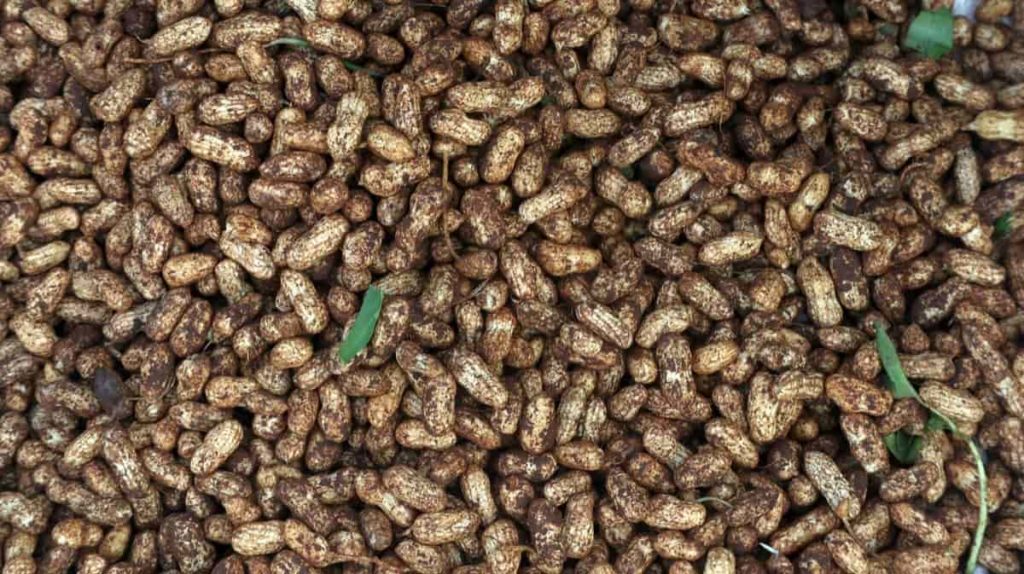
They can be easily processed by frying and grafted into many food products. Most Americans use Peanuts for food, especially Peanut butter, while most foreign countries use Peanuts for oil. Let’s check out more information about Peanut farming in USA below.
Peanut-producing states in the United States
Peanuts belong to the pea family. The largest Peanut producer in the USA is Georgia, followed by Alabama. The first Peanuts grown in the USA were grown in Virginia. In the USA, ten states grow 99% of the American Peanut crop: Georgia (about 42% of all American Peanuts), followed by Texas, Alabama, Florida, North Carolina, South Carolina, Mississippi, Virginia, Oklahoma, and New Mexico.
Different Peanut varieties available in the USA
American Peanuts fall into four main categories: Runner, Virginia, Spanish, and Valencia. Each of these Peanuts is unique in size and taste.
Spanish varieties
Small Spanish varieties are grown in Southeastern America. Different types of Spanish include Dixie Spanish, Improved Spanish 2B, GFA Spanish, Argentina, Spentex, Spaniel, Shepherd Spanish, Natal Common (Spanish) White Kernel varieties, Comet, Florispan, Spanhoma, Spancross, and Wilco I. Spanish, mainly used for Peanut butter, salted nuts and confectionery.
It accounts for 11% of total US production. It is mainly grown in Texas and Oklahoma. The Spanish type of Peanut has a small kernel covered with reddish-brown skin. They are mainly used in Peanut candy but are also used in salted nuts and Peanut butter. Spanish Peanuts account for 2% of US production.
Runner types
Since 1940, runner-type Peanut production in the southeastern United States has changed due to higher production and widespread use of Peanut butter and snacks than Spanish varieties. Runner varieties include Virginia Bunch 67, Bradford Runner, Egyptian Giant, South Eastern Runner 56-15, Dixie Runner, Early Runner, Rhodesian Spanish Bunch, North Carolina Runner 56-15, Florunner, and Shulamit.
Runner, 60% of which goes into Peanut butter. The dominant variety is grown, accounting for 68% of US production. It is mainly grown in Georgia, Alabama, and Florida. The introduction of the Florunner variety in the early 1970s has made it the dominant variety of peanuts growing in the United States.
It was responsible for the spectacular increase in Peanut production. Runners have gained increasingly wide acceptance due to their attractive grain size range. A large proportion of runners are used for Peanut butter. Runners, grown mainly in Georgia, Alabama, Florida, Texas, and Oklahoma, account for over 85% of US production.
In case you missed it: Ways Groundnut Farming Can Make You Rich in Short Time
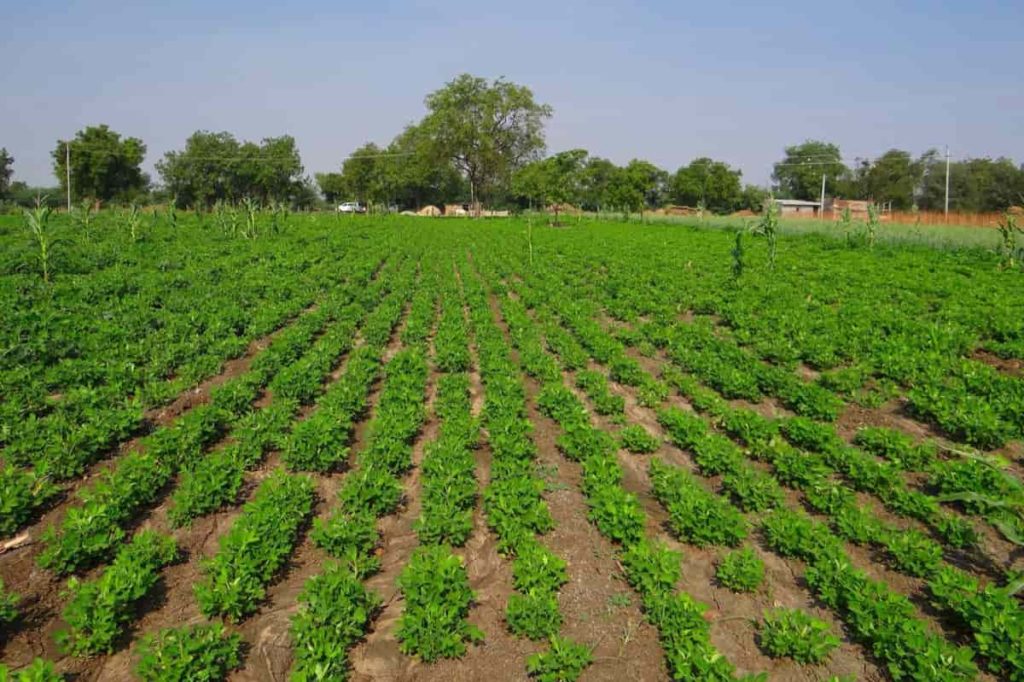
Virginia varieties
Virginia, mostly Peanuts roasted and eaten out of the shell (ballpark Peanuts). Big kernel is 20% of the total production of the United States. It is mainly grown in Virginia and North Carolina. Virginia has the largest kernel and is eaten mostly fried Peanuts. When peeled, large grains are sold as salted or flavored Peanuts.
Virginia is grown mainly in southeastern Virginia and northeast North Carolina, South Carolina, and West Texas—peanuts of the Virginia variety account for about 10% of total US production. Valencia, sweeter than others, is usually roasted to eat out of the shell. High quality; perfect for growing for home use. Three or more small nuts per pod. About 1% of US production. It is mainly grown in New Mexico.
Valencia varieties
Valencia usually has three or more small grains in a pod. These are very sweet Peanuts and are usually sold in roasted peels. They are perfect for fresh use as steamed Peanuts. Valencia is also commonly used to make natural Peanut butter. Due to the high demand for other varieties, Valencia is less than 1% of US production and is grown mainly in New Mexico.
How much money does a peanut farmer make?
The average Peanut farmer in the United States earns 46 46,775. The average bonus amount for a Peanut farmer is approximately $ 1,410, representing 3% of their salary, with 100% reporting that they receive a bonus each year. Peanut farmers earn the most in San Francisco, at $ 56,374, 21% higher than the US average.
Soil requirement for Peanut production
For Peanut production, the soil should be light in color, light in texture with good drainage, and moderately low in organic matter. This soil type is preferred because it is usually loose, allowing easy penetration of roots and stems, better rainfall, and easy harvesting. The light-colored soil reduces pod stains, ensuring greater eye attractiveness when the crop is used for peeled nuts. Well-drained soil provides adequate air for roots and nitrifying bacteria that are essential for the proper mineral nutrition of the plant.
Moderate to heavy soils or those with high soil content should also be avoided during Peanut harvesting as more damage to the pods should be avoided. Organic matter should be maintained at 1 to 2% to improve soil water retention capacity and supply plant nutrients. Peanuts grow best in light-acid soils with a pH of 6.0 to 6.5, but a range of 5.5 to 7.0 is acceptable. Salty soils are not suitable because Peanuts have low salt tolerance.
Seed preparation and germination
The poor stand is probably the most common cause of low yields. To get the full stand, use a harmless seed with a secure seed coat and treat the shelled seed with an approved seed protector before planting. Planting seeds instead of pods allows for easier machine planting and a more uniform stand. Higher yields when seeds were used because planting delays moisture absorption in the shells.
In case you missed it: Groundnut Farming (Peanut); Planting; Care; Harvesting
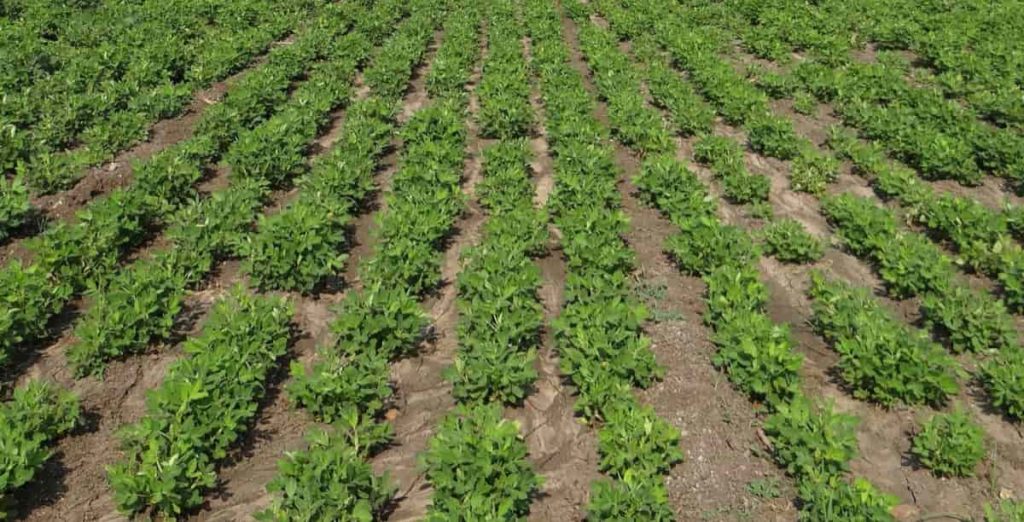
Plant the Peanut seeds
Peanuts are planted from April to May after the last frost when the soil temperature reaches 18 —21°C. Farmers plant Peanut kernels, specially grown from last year’s crop, about two inches deep, about one to two inches apart in rows. A good crop requires 140 to 150 frost-free days.
Tips for planting Peanuts
- The growth cycle of a Peanut takes 4 to 5 months, depending on the type and variety.
- Despite their name, Peanuts are not hard-shelled nuts but mature legume seeds in underground pods, analogous to bean or pea pods.
- Pods begin with orange, yellow-petaled, pea-like flowers, which grow in an axial cluster above the ground. After self-pollination (Peanuts are a complete inbreeder), the flowers fade. Pods work to absorb nutrients. Fruits have wrinkled shells that are narrow between two and three seeds. Mature seeds are similar to other bean seeds, such as beans, but they have a thin paper seed coat, unlike a normal hard bean seed coat.
- Peanuts grow best in light, sandy loam soils. They need five months of warm weather and 20 to 40 inches of annual rainfall or the equivalent of irrigation water.
- Though, the pods ripen 120 to 150 days after sowing. If the crop is harvested too soon, the pods will be unripe. If harvested late, the beans will be uprooted from the stalks and left in the soil.
Management practices for Peanut farming in USA
Peanuts adapt well to sandy soils, providing adequate rainfall or irrigation. It is highly recommended to grow one or more crops between Peanut crops. Long rotation and those who avoid soybeans, as soybeans can host major Peanut diseases, resulting in significant improvement in yield.
Peanuts are grown under irrigation; the important time to avoid water pressure is during mid-season nut growth. During this period, stress can not only significantly affect yield, but it is also the period when the crop uses the most water. Irrigation is not generally recommended early in the season and during Peanut ripening.
Peanut plant care
- Like other legumes, Peanuts can produce nitrogen inside their roots. It is known as “fixing.” To ensure that Peanut plants grow and produce plenty of nitrogen, it is advisable to inoculate the seeds with these friendly bacteria. Inoculants can be purchased through seed stores and seed catalogs. Follow the label instructions.
- Peanuts also need a proper supply of calcium for proper growth, so apply agricultural gypsum in rows immediately after the plants open. Although the basics of normal plant reproduction are known to many gardeners, Peanuts are reproduced in an unusual way called geocarpy, meaning that the plant’s flowers are above the ground. Still, the fruits are formed and mature in the ground.
- As the Peanut plant grows, small yellow flowers appear on the small stem. Once the flowers wither, they form a self-pollinated Peanut egg, commonly called a “peg.” This peg moves downwards and enters the soil. Once underground, Peanuts will begin to grow.
In case you missed it: Organic Peanut Farming; Cultivation Practices
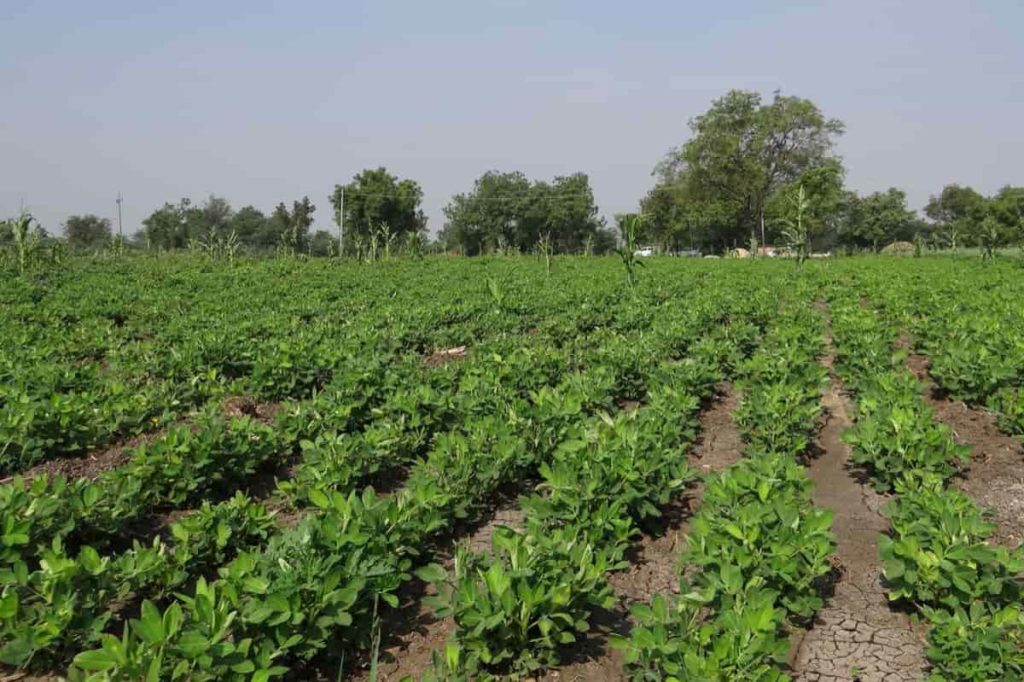
- Peanut plants will continue to grow and flourish, but don’t worry – your Peanuts should be ready for harvest simultaneously. It is because the ones that are formed earlier mature more slowly than the ones that are formed later.
- You can start harvesting within three months of planting by lifting the plants from the soil using a pitchfork. For dried Peanuts, pile the plants into well-ventilated piles. Allow your Peanuts to heal for 5 to 10 days with warm temperatures to avoid relatively dry weather. Peel and wash the Peanuts, then fry them for a delicious snack. Not all beans ripen simultaneously, so deciding when to harvest can be problematic.
- Runner Peanuts ripen about 135 to 155 days after planting. Valencia Peanuts are grown for boiling and can ripen 75 days after planting.
Does the US import Peanut?
The average annual Peanut import is less than 0.5% of US consumption. Two-thirds of US imports are roasted Peanuts. The major Peanut suppliers are Singapore, Taiwan, Malaysia, Hong Kong, China, and Canada. The main suppliers of Shield Peanut Imports are Argentina and Canada.
Fertility and Lime requirements for more Peanut growth
Peanuts respond well to the residual soil fertility of previous crops in rotation but generally have a lower response to fertilizers in soils with moderate to high fertility levels. Broadcast applications are recommended when nutrients are needed (low or very low soil test levels), especially due to the low salt tolerance in potash Peanuts. Prices should be similar to those used for soybeans. Because it is a pod, Peanuts can biologically fix their nitrogen.
An adequate amount of field soil should be checked with a soil test for Peanut fertility. A maximum pH level of 6.0 to 6.5 usually results in sufficient calcium; however, on light soils, especially where long-term potash has been used, Ca limits the formation of pods. A soil test should be more than 600 to 800 ppm.
Although plant analysis may be useful for micronutrient levels, it does not detect calcium deficiency in storage organs such as Peanuts. Severe deficiencies of calcium and micronutrients are unlikely in large Peanut production areas. Crops on irrigated sandy soils require seed vaccination with nitrogen fertilizer or appropriate Rhizobium strain. One hundred and fifty pounds of nitrogen per acre was needed to equal the yield from seed vaccine alone. An alternative to seed inoculation is to apply granular inoculants to the seed furrow with a planter.
Irrigation management
Peanuts require about 1 inch of rain or irrigation each week during the growing season. It is very important to water immediately after planting to ensure germination and plant formation. Avoid wetting the leaves when watering, and use drip irrigation if possible.
Are Peanuts growing in Texas?
Texas is the only state that grows four varieties of Peanuts: Runner, Valencia, Spanish, and Virginia. Lone Star State is unique because its farmers can grow organic Peanuts in arid West Texas.
Can you grow Peanuts in Florida?
You can plant Peanuts from March to May in North and Central Florida. For planting, use raw Peanuts as seeds and leave them in their shells for rapid germination. Row them 4 to 6 inches apart and 2 to 4 inches deep, 24 to 36 inches apart.
In case you missed it: Groundnut Oil Making Process (Peanut), Business Plan
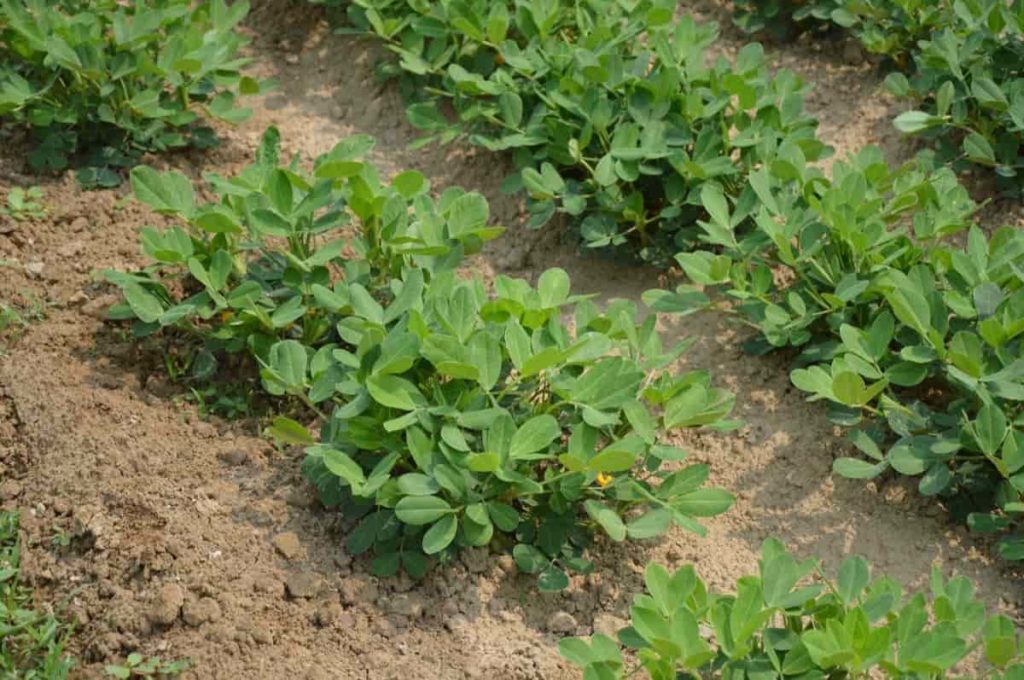
Pests and diseases Control in Peanut farming
Pest management is used to control pests, diseases, and pests. Diseases caused by many fungal organisms are particularly disturbing and usually require chemical control. Weeds are controlled either chemically or mechanically or a combination of both. Despite numerous potential pest problems, Peanuts are available and grown in most dry western Peanut growing regions.
Some pests and diseases affect Peanut production, and an integrated pest management program is recommended to control them to reduce costs and create resistance to pesticides in these pests. A variety of test results from state expansion programs can be a valuable tool in selecting varieties that are high-yielding crops and resistant to major pests and diseases.
The preparation of Peanuts for harvesting should be carefully monitored as harvesting time can affect both production and quality. Peanuts are first dug up and then allowed to dry, preferably before attaching, to a moisture content of about 10%. Fresh combined Peanuts are usually kept in Peanut wagons, further cured by forced hot air.
Major diseases in Peanut crops are rust, early and late leaf spot, collar rot, aflatoxin, and Peanut bud and stem necrosis. Appropriate cultural practices, chemical formulations, and biological measures can control disease-resistant varieties.
The major insects that attack Peanut crops are tobacco caterpillars, gram pod borers, red-hairy caterpillars, etc. Some integrated pest management practices include growing crop-resistant varieties and trapping crops like sunflower and castor beans at the border. Manually remove insect eggs from the farm, allow birds to feed on insect larvae, and apply neem seed oil or powder. Chemical pesticides and insecticides are also available to control these pests. Other insects in Peanut crops are leaf miners, aphids, thrips, white grub, and termites.
When and how to harvest Peanuts
When the plant matures, and the Peanuts are ready for harvesting, the farmer waits until the soil is too wet or dry before digging. When conditions are right, move the green rows of Peanut plants up and down. The digger pulls the plant, gently shakes off any covered soil, rotates it, and puts it back in a “windrow” – leaving the Peanuts up and down.
Peanuts are harvested in two stages. Digging, the first stage, begins when the samples indicate maximum maturity. Early or late digging yields lower yields and a lower percentage of mature beans. Adult Peanuts taste great. A digger moves along rows of Peanut plants that drive a horizontal blade 10-15 cm below the soil. The digger loosens the plant and cuts off the root. The inverted plant windrow results in the pods being exposed to the sun.
Peanuts are now ready for the second stage of harvesting. Freshly harvested Peanuts are placed in drying wagons for further treatment, forcing hot air to circulate slowly. In the treatment process, the moisture content for safe storage is reduced by 8-10%.
Peanut marketing
Peanut crops grown in the United States are used for Peanut butter, oil, confectionery, and direct use. About 60% of Peanuts are used to make Peanut butter. About 15% of the Peanut crop is crushed for oil used to make cakes and food.
In case you missed it: Groundnut Cultivation Income (Peanut), Cost, Yield
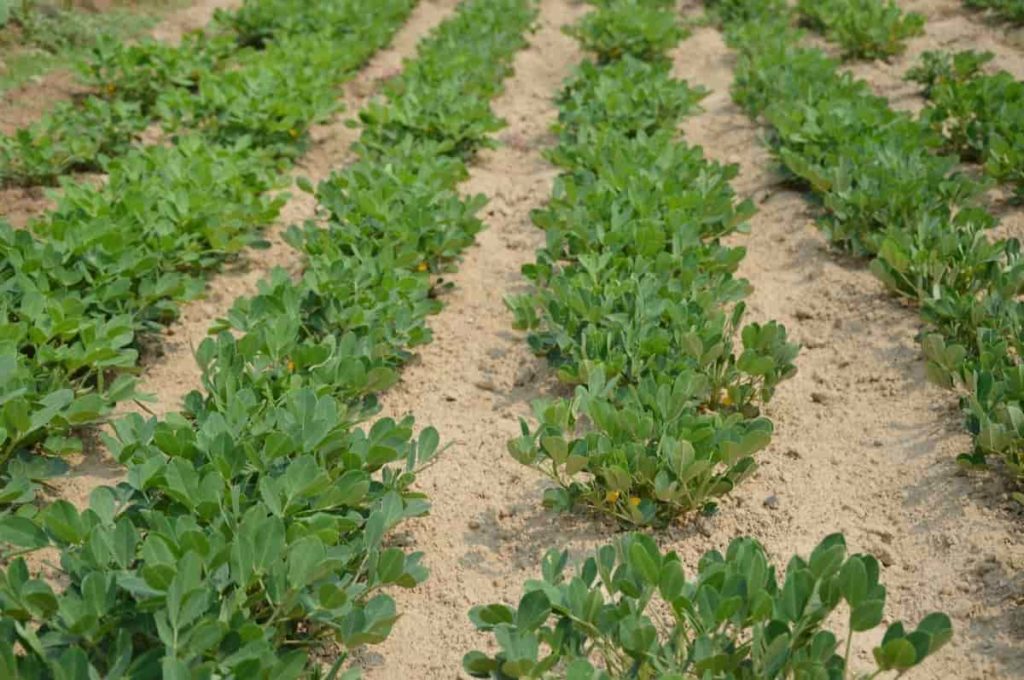
US Leads World in Peanut Exports
The USA is one of the world’s leading exporters of Peanuts, with annual exports of 500,000 metric tons averaging more than $ 675 million annually. The increase in production and efficiency of American Peanut farmers has made their products more competitive in the global market.
Peanuts are commercially cultivated in 13 US states, with Georgia accounting for about 45% of all American Peanuts. Georgia, Florida, Alabama, Texas, North Carolina, and South Carolina produce almost all-American Peanuts. Mississippi, Virginia, Oklahoma, Arkansas, New Mexico, Louisiana, and Missouri together produce about 6% of the American Peanut crop.
Peanut-producing states are divided into three regions. Southeast, including Georgia, Florida, Alabama, and Mississippi, the southwestern region comprises Texas, Oklahoma, New Mexico, and the Virginia-Carolina area. Sixty-eight percent of American Peanuts are grown in the southeast, 18 percent in the southwest, and 13 percent in the Virginia-Carolina region.
The USA is a leading global exporter of Peanuts, with an average annual export of 225,000 metric tons. The largest US market for Peanuts is Canada, followed by Mexico.
Conclusion
Consumption of Peanuts as food in the United States has increased significantly in recent years. About half of the Peanut crops are grown in the USA within a 100-mile radius of Dothan, Alabama. There are about 900 Peanut farmers in Alabama. American Peanut production and food consumption have nearly doubled in the last 30 years, although the area under Peanuts is almost permanent, about 1.5 million acres.
- Economical Aquaculture: A Guide to Low-Budget Fish Farming
- 15 Common Planting Errors That Can Doom Your Fruit Trees
- How to Make Houseplants Bushy: Effective Tips and Ideas
- Innovative Strategies for Boosting Coconut Pollination and Yield
- Pollination Strategies for Maximum Pumpkin Yield
- The Complete Guide to Chicken Fattening: Strategies for Maximum Growth
- Natural Solutions for Tulip Problems: 100% Effective Remedies for Leaf and Bulb-Related Issues
- Revolutionizing Citrus Preservation: Towards a Healthier, Greener Future
- Natural Solutions for Peony Leaf and Flower Problems: 100% Effective Remedies
- Maximizing Profits with Avocado Contract Farming in India: A Comprehensive Guide
- Natural Solutions for Hydrangea Problems: 100% Effective Remedies for Leaf and Flowers
- The Ultimate Guide to Choosing the Perfect Foliage Friend: Bringing Life Indoors
- From Sunlight to Sustainability: 15 Ways to Use Solar Technology in Agriculture
- The Ultimate Guide to Dong Tao Chicken: Exploring from History to Raising
- The Eco-Friendly Makeover: How to Convert Your Unused Swimming Pool into a Fish Pond
- Mastering the Art of Delaware Chicken Farming: Essentials for Healthy Backyard Flocks
- 20 Best Homemade Fertilizers for Money Plant: DIY Recipes and Application Methods
- How to Craft a Comprehensive Free-Range Chicken Farming Business Plan
- Brighten Your Flock: Raising Easter Egger Chickens for Beauty and Bounty
- How to Optimize Your Poultry Egg Farm Business Plan with These Strategies
- Subsidy for Spirulina Cultivation: How Indian Government Schemes Encouraging Spirulina Farmers
- Ultimate Guide to Raising Dominique Chickens: Breeding, Feeding, Egg-Production, and Care
- Mastering the Art of Raising Jersey Giant Chickens: Care, Feeding, and More
- Ultimate Guide to Raising Legbar Chickens: Breeding, Farming Practices, Diet, Egg-Production
- How to Raise Welsummer Chickens: A Comprehensive Guide for Beginners
- How to Protect Indoor Plants in Winter: A Comprehensive Guide
- Ultimate Guide to Grow Bag Gardening: Tips, Tricks, and Planting Ideas for Urban Gardeners
- Guide to Lotus Cultivation: How to Propagate, Plant, Grow, Care, Cost, and Profit
- Agriculture Drone Subsidy Scheme: Government Kisan Subsidy, License, and How to Apply Online
- Ultimate Guide to Raising Araucana Chickens: Breed Profile, Farming Economics, Diet, and Care
- Bringing Hydroponics to Classroom: Importance, Benefits of Learning for School Students
- Ultimate Guide to Raising Polish Chickens: Breed Profile, Farming Economics, Diet, and Care
- Ultimate Guide to Raising Australorp Chickens: Profile, Farming Economics, Egg Production, Diet, and Care
- Silkie Chicken Farming: Raising Practices, Varieties, Egg Production, Diet, and Care
- Sussex Chicken Farming: Raising Practices, Varieties, Egg Production, Diet and Care
- Homemade Feed Formulations for Livestock: Discover Cost-effective Starter to Finisher Feed Recipes
Thank you for sharing your knowledge and expertise through your blog post. The information was well-researched, and I appreciated the way you made complex concepts understandable.